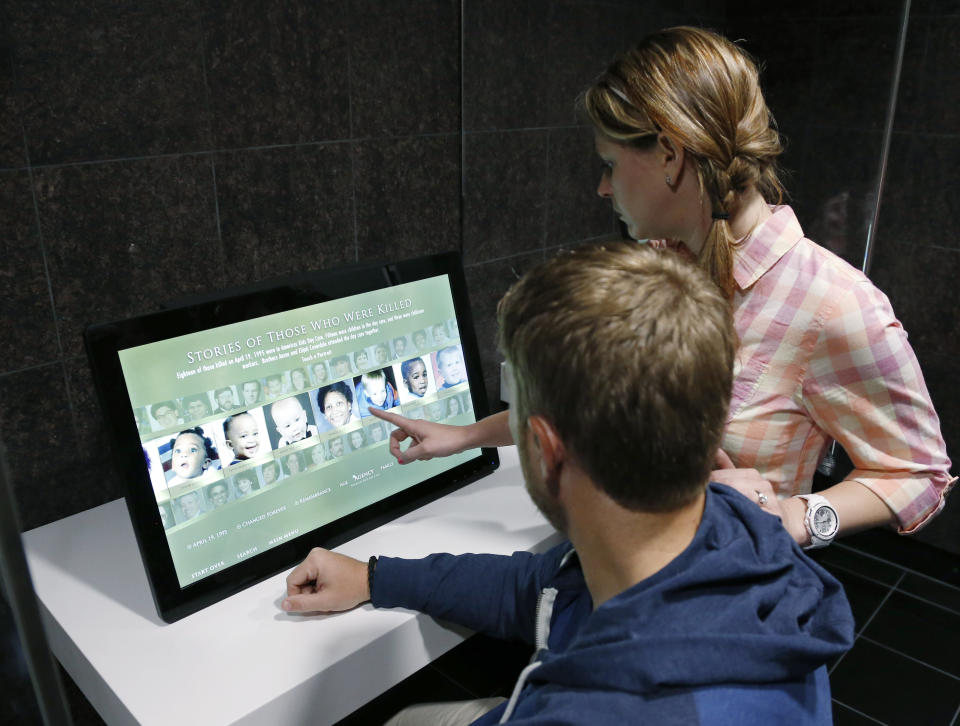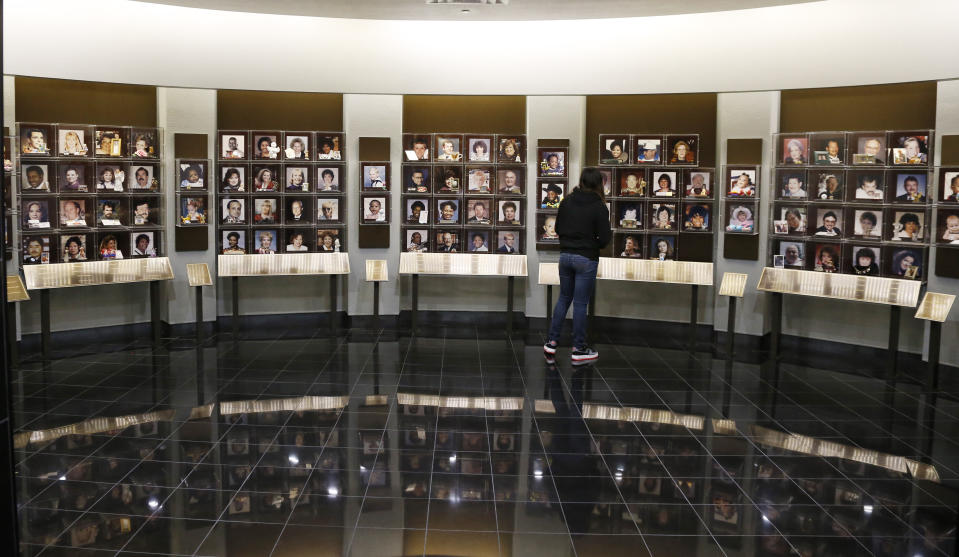Oklahoma City bombing museum sees technology boost
OKLAHOMA CITY (AP) — A memorial and museum built to remember the worst act of domestic terrorism on American soil is in the midst of a $7 million upgrade so it can better portray how different the world was when Timothy McVeigh blew up the Oklahoma City federal building 19 years ago Saturday.
Too many patrons, especially younger ones, do not realize that the days of constant cellphone contact and instant news updates are more recent developments, and that the hours and days spent pulling mangled bodies from the crumbled Alfred P. Murrah Federal Building left the victims' families in agony.
"They ask questions like, 'Well, why couldn't you just call their cellphone?' because they're so used to that kind of mentality," said Susan Winchester, the chairwoman of the Oklahoma City National Memorial Foundation, who lost her sister in the blast. "They don't have any concept of what it was like 19 years ago."
Where the Murrah building once stood, 168 empty chairs now sit on a slope above a reflecting pool. The static display is noted for its emotional pull, but officials say explaining the context requires more than photos, text and artifacts.
"Our job is to keep the story relevant and alive and to make sure people can connect to the story," said Kari Watkins, executive director of the Oklahoma City National Memorial & Museum, which opened in 2000. "Learning styles have changed since 14 years ago, and how my kids learn is much different than how I was taught."
Upgrades set for completion by Thanksgiving include interactive displays, a viewing deck and new exhibits on the criminal trials.
"For the younger generation, it's becoming a more distant moment. They want to know how this loop is closed," said project architect Patrick Gallagher. "What I think we had the opportunity to do was to look at the story in a very careful and pragmatic way and there were a number of places where we thought it was time for the content to mature."
On April 19, 1995, Timothy McVeigh drove a truck filled with fertilizer and fuel oil to the front of the Murrah building and detonated the makeshift bomb, killing 168 people, including 19 children. He was executed for the crime, while co-conspirator Terry Nichols is serving life in prison.
The bombing occurred exactly two years after a federal raid on a religious compound in Waco, Texas, left 76 people dead at the end of 51-day standoff. McVeigh cited the Waco raid as one motivation.
Many museum visitors were children when McVeigh was executed in 2001.
"It wasn't in the contextual reality of their lives," Gallagher said. "There's all this new information from the investigations, so now we can really add in the story of justice being served."
Winchester, whose sister Peggy Clark died in the bombing, recalled picking up her three nieces from school the day of the blast and the family remaining hopeful that Clark was assisting rescuers at the scene.
"Initially we just assumed, because she was a doctor, with her medical training she was probably helping people," Winchester said. "(The girls and I) realized later in the afternoon that it was time for mom to show up and she wasn't there."
With the new interactive displays, visitors can search for victims by categories like hometown, age, what office people worked in and artifacts linked to each person. Winchester said she used her sister as an example to showcase the interactive last week and was surprised by what she found.
"I pulled up my sister just as an example and on there was this ladybug, and I thought how strange, they must have put this in the wrong place," Winchester said. "It turns out someone had left this thing on her chair on one of the anniversaries. ... It was such a nice surprise to me that others still care about her."

 Yahoo News
Yahoo News 

